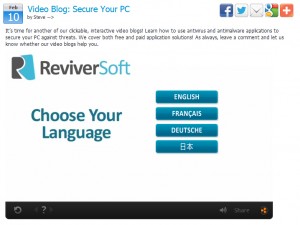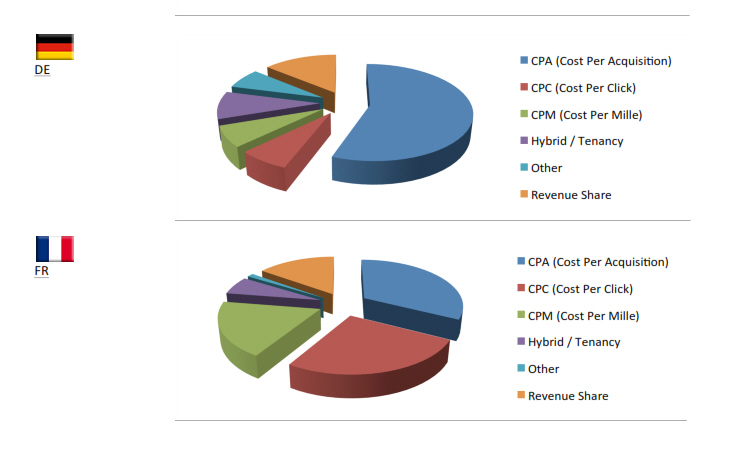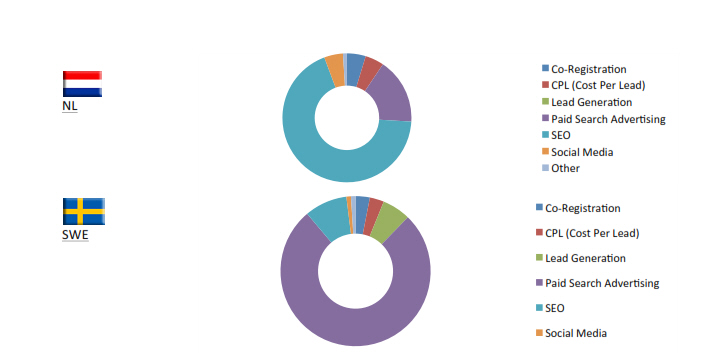Last week, we said that if you are a US software company looking for high quality European affiliate partnerships, you must take the time to research a variety of European markets and local affiliate programs.
In addition to establishing the economic viability of these markets, you must also internationalize and localize your product and website, adapting to what Robert Glasgow of Webgains calls, “the subtle idiosyncrasies of each local market.”
That is to say, don’t expect to sell any products until you understand the geographic, linguistic and cultural differences between each European region. Internationalizing and localizing the needs of your target market is the process of adapting to those “subtle idiosyncrasies.” Without a focus on localization, you won’t convert well in regional markets, and if you can’t convert well in regional markets, affiliates there have little incentive to advertise your product.
Internationalization
First you need to internationalize your technical infrastructure. According to Google, internationalization refers to:
“…a software engineering process that separates locale-dependent content from locale-independent content on your website. For example, text, currency, and images with text embedded should be separated from the logic that glues your site together, such as your site’s navigation. “
The alternative to internationalizing your site is a situation where you need to completely rebuild your site and product step by step for every locale in which you wish to advertise.
As internationalization experts, Lingoport suggests that by internationalizing your product and website, your company becomes, “capable of not only supporting any language, but also supporting local formats and ways of doing business. ”
They further note that, “If you are using another company’s ecommerce platform technology for your site, then you must find out exactly how they support internationalization. ”
Localization
Localization is not the same thing as translation, and even if it were, Google Translate will not suffice. Google is not a professional translation service. Creating a fully localized shopping experience for your customers with appropriate translations requires partnering with industry experts who speak the local language natively and understand local cultural preferences.
The requirements for native speakers and industry experts are what Google calls translation direction and specialty translation.
Concerning translation direction, it is preferable to work with a translator who is able to translate your product’s native language into their own native tongue. As Google puts it,”…a Spanish native in Madrid who studied English in college is more likely to be better at translating from English into Spanish than vice versa.” Specialty translations, of course, refer to translations for niche markets. As sellers of software, your translation should be done by ecommerce professionals with a deep understanding of the locale for which they are translating.
It’s important to remember that localization doesn’t imply a mere interlingual translation. It’s more than taking a word from one language and converting it into a replacement word in another language. Academic discussions on the philosophies of translation often differentiate between “equivalence” and “functionality.”
Localization means optimizing the entire shopper experience and user experience for functionality. Even if two countries speak the same language, they may not use that language identically. For example, Americans use the term “Cart” to name the place where products are stored while shopping, whereas the British use the term “Basket.”
As we see in the examples below, a conscientious ecommerce business looking to impress European customers will take note of these idiosyncrasies and adjust accordingly.


Of course, regional English is not the only time you will encounter this problem. Similar situations can occur with:
- European Portuguese vs Brazilian Portuguese
- European French vs Quebecois French
Elements that need localization
For software companies looking to partner with European affiliates, localization begins with your product and its user manuals, but the process must also include localizing your website, your ads and your landing pages. This checklist includes the important elements of any localization project, regardless of which part of your platform you are localizing:
- Labels
- Text fields
- Message boxes
- Times
- Dates
- Phone numbers
- Currencies
- Addresses
- Graphics
- Punctuation
- Prices
Buttons
Keep in mind that texts may expand during localization. For example, the English phrase “Buy Now” is a shorter text than the German equivalent “Jetzt Kaufen.” Without careful foresight, you can end up with buttons that look like Button 2, where the text crawls out of the image field.


Video
Again, if your product or site is not understood by local customers, local affiliates will not promote it. Notice in the still below how ReviverSoft localizes their video content for the foreign markets they target. They understand that in order to compete in these markets, they need to speak the same language as their audience, not vice versa.

Payment Models
When partnering with affiliates in Europe, be aware that affiliates in one region may prefer one payment method, where affiliates in a different region prefer an alternative payment method. According to the A4U “European Affiliate Marketing Landscape Report” from 2011, German affiliates overwhelmingly prefer CPA models of revenue generation against CPC or CPM models, while French affiliates prefer CPC over CPA. If you target a certain market, but refuse to accept their preferred payment method, you are likely disincentivizing these programs from advertising your product enthusiastically.

Traffic Sources
You must also know what the best traffic sources is for each of your targeted regions. Where the Dutch affiliates drive traffic with SEO, the Swedish do so with paid search advertising. If you wish to compete in these markets, you need to know how your affiliates bring traffic to their sites.

Keystone
Localizing your product and website is a key component of attracting affiliate programs in Europe. Know which elements to localize and make sure to use native speakers in your targeted locale to determine proper translations.
Werner Decker-Hibbel contributed to this blog post